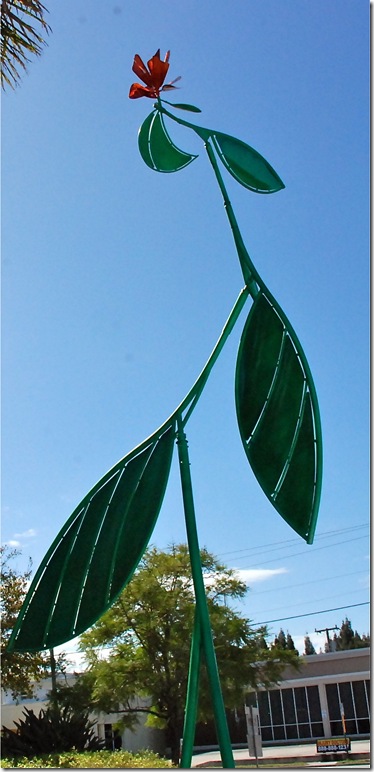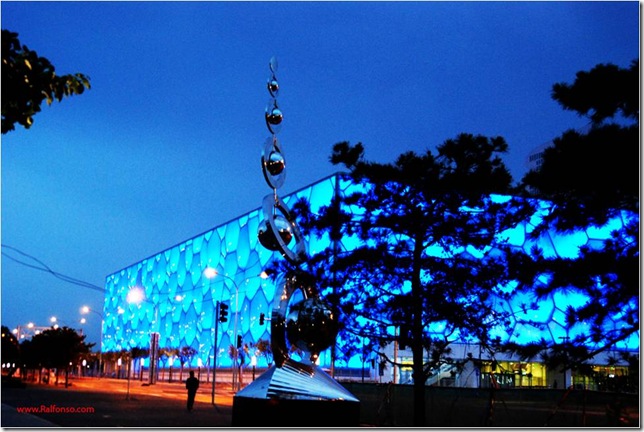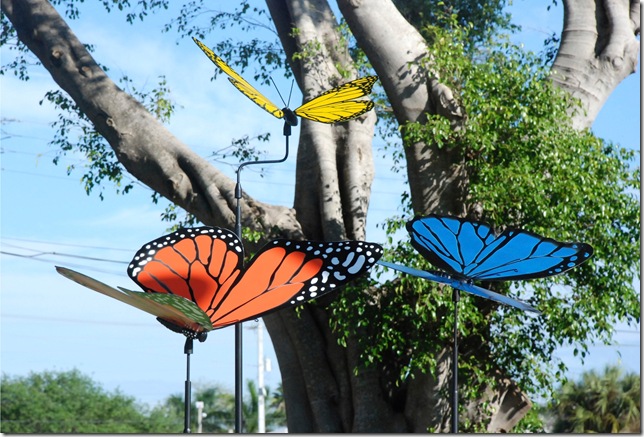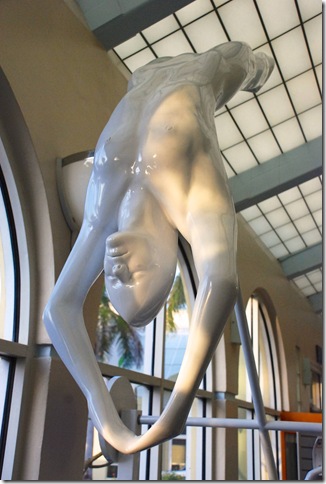Standing 9 feet tall and weighing in at 350 lbs., Ralfonso Gschwend’s Dance With the Wind kinetic sculpture sits in front of downtown Boynton Beach’s Civic Center as part of the first-in-the-nation international “kinetic art” exhibit and symposium.
A larger 33-foot version, commissioned by China for the 2008 Olympic Games in Beijing, remains in a permanent installation next to the former swimming pavilion.
The stainless-steel construction is composed of five rings and ball elements that undulate and sway in the wind in ever-changing shapes.
“My passion in life is kinetic art in public spaces,” says the Swiss-born Ralfonso, who uses only his first name professionally.
Boynton Beach has installed Dance with the Wind, along with 15 other kinetic sculptures in and around the downtown arts corridor along East Ocean Avenue and North Seacrest Bulevard over the past year, as part of the kinetic art symposium, which begins Friday and ends Sunday.
The three-day event, planned jointly by Ralfonso and Debby Coles-Dobay, the public art administrator for the city of Boynton Beach, was three years in the making and is planned as a biennial event.
“Kinetic art connects people, transcends all boundaries as an art form and brings international attention to the city and area,” Coles-Dobay said. “When the city’s arts commission was forming their visioning plan, their goal was to deliver an art event that transcended typical art fairs, brought international attention to the city and educated and engaged the public in the arts.”
The symposium, which is free and open to the public, has an educational component for students, designed to introduce them to kinetic art, which Ralfonso notes is at the intersection of science, art and technology.
“Learning about kinetic art is great fun for kids. They learn science and physics as well as art and design and the creative aspects that go into conceiving and making moveable artwork,” said Ralfonso, who is president and co-founder with fellow artists Rein Triefeldt and Bernward Frank of the Kinetic Art Organization.
Works by local and internationally known artists including I-Ching by Jeff Kahn, Lin Emery’s aluminum and stainless steel geometric sculptures, Fold and Quinte, at City Hall, and Jeffrey Laudenslager’s tai-chi inspired sculpture, Basho, are part of the exhibit. Local artists David Langley and his colorful, fluttering butterflies along Ocean Avenue Park, and Boynton Beach-based artist Sarah Younger’s ecological and Lakota-inspired Mni Iktomi at the Civic Center are evocative of the natural world.
Emery’s Fold, a 100-lb. aluminum and stainless steel sculpture with four shiny silver vertical leaf shapes, twists and turns in the wind mimicking petals, plants and flowers and Quinte resembles a crane in flight.
Emery, one of the few women artists creating large and monumental kinetic sculptures, has been creating moveable art for more than 60 years. Inspired by the Japanese shishi-odoshi, small kinetic sculptures that use water to scare away deer, Emery began creating her own kinetic artwork.
“One day late in the 1960s I was washing dishes and a little spoon caught on the end of a cup and the water made it oscillate back and forth,” she said. From that first cup and spoon, Emery’s works now adorn buildings and museums in England, Japan, Australia, Germany and France.
Symposium events include an invitation-only reception at the Schoolhouse Children’s Museum on Friday night, followed by two days of public events. Saturday features two talks in City Hall Chambers, one about the history of kinetic art, and another about how kinetic art is made.
Sunday includes a morning discussion of kinetic art in education, and then an awards presentation in the afternoon announcing the winners of the 2103 Kinetic Art Competition. Entries came from 31 participants from eight countries and four continents, including Switzerland, India, China and Canada.
Topics to be discussed include a discussion of the origins of the kinetic art movement, from its inception with Marcel Duchamp’s 1913 The Bicycle Wheel, to the mechanics of Naum Gabo and the light effects of Laszlo Moholy-Nagy during the 1920s and 1930s, up to and including the Dada work in the 1950s of Jean Tinguely.
Theo Jansen, a Dutch artist known for his Strandbeest, which are large, moveable PVC sculptures infused with artificial intelligence, will screen a short video titled Imagination that illustrates how kinetic art is conceived. Sunday’s education panel will feature Younger, Triefeldt, Ralfonso and Bill Henry discussing the nature of creativity.
Triefeldt will speak about his SolART project and his experiences with the Solar Tree Project in California and Cyprus. He has collaborated with schoolchildren to develop “solar trees’ to produce energy and power their energy needs.
In conjunction with bass guitarist Francisco “Pancho” Tomaselli, a native of Ecuador who plays for the band War, Triefeldt designed a solar sculpture (Condor del Sol) to power a remote mountain village in Ecuador and bring electricity to the 30,000 residents.
Kinetic sculptures also can be just for fun. Colorado-based sculptor John King’s Tangerine Glider swims in the air in front of the old Boynton Beach High School, playing and engaging passers-by, like a giant, mythical being.
King said he wants to remind viewers that nature is still part of our world, even in urban settings.
“You get a sense of something living,” he said, then jokes: “Don’t turn your back on them. They’re bigger than you are and they seem to be friendly, but you’re not the biggest thing in the park anymore.”
For more information about the Kinetic Art exhibit, visit http://intlkineticart.org.



